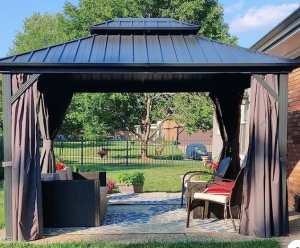Independent Living Programs For Young Adults

Youth transitioning out of foster care are subject to two simultaneous transitions – from the security and protection of residential group homes/foster care, to becoming independent adults responsible for themselves and living life independently. They must acquire life skills, gain employment opportunities and pursue further tertiary studies in order to reach their full potential and thrive.
Independent living programs for young adults develop life skills such as budgeting and nutrition planning, apartment locating/living arrangements, family planning and decision making.
Table of Contents
Transitional Living
After finishing residential treatment, teens and young adults often transition into transitional living programs for further development. These programs offer safe havens while they learn to cope with everyday stresses; boast state-of-the-art facilities with various activities designed to keep teens and young adults active and engaged; teach life skills such as personal hygiene, cooking, cleaning, financial management and setting short and long term goals; while offering life skills training such as these.
Transitional living programs aim to assist young adults as they make the transition back into families and communities after experiencing homelessness or disconnection, providing educational, employment, and psychological services on-site.
Residential programs tend to be housed in congregate buildings that house between 15 and 60 clients who share studio apartments and common living areas, charging a weekly or monthly dollar value rental to cover food, housing costs, utilities fees and additional services that may be provided on-site.
Group Homes
Foster youth may find the transition into adulthood difficult, which is why numerous organizations provide one-on-one assistance to ensure an easy process.
Teens unable to live with their parents often prefer living in an intimate therapeutic setting where the staff knows them well. Group homes provide teens an environment in which they can learn about functioning in their community while developing life skills through various activities. Teens also receive basic living skills training, behavioral management strategies (such as token economy systems whereby privileges can be earned for following rules), and education that caters specifically to their level of understanding.
Families seeking group homes should inquire into the ratio of caregivers to residents as well as visit the facility, determine whether it provides transportation, distance limitations and whether health insurance plans are accepted by it – some people on Medicaid may even use waiver funds to cover housing in a group home or adult foster care facility.
Apartment Community
Young adults ready to live independently should consider independent living arrangements like apartments. Such programs provide housing with on-site support services like case management, vocational training, recreational activities and psychiatric services – examples being Good Shepherd Services’ Chelsea Foyer of 40 apartments that house homeless or at-risk youth aged 26 out of foster care; and Louis Nine House in Bronx which houses 46 homeless or at-risk individuals of whom 14 are transitioning out.
Four organizations also run “scattered-site” programs that place young people in studio or two bedroom apartments throughout their communities and offer educational, employment and social services on site. Families may wish to explore options like providing their children with more freedom through living arrangements such as garage apartments or mother-in-law suites on family homes if local zoning laws permit such arrangements; this may allow more independence while also decreasing behavioral problems that put themselves or family members at risk.
Independent Living Units
Independent living communities (commonly referred to as retirement communities, 55+ housing, senior apartments or age-restricted housing) give healthy seniors the opportunity to join an established social community while participating in senior activities without worrying about maintaining their own homes. They can take various forms, from continuing care communities that offer multiple levels of services through to standalone communities with amenities like golf courses.
These communities help seniors alleviate some of their daily responsibilities by offering housekeeping and laundry services, meals in on-site dining facilities, healthcare on site, recreational activities and much more. While residents typically pay out-of-pocket for these services, certain amenities may also be included as part of their monthly fees.
Independent living communities provide residents with a host of programs, social activities and fitness options to keep them physically, mentally and emotionally active. Activities range from gardening or book clubs to cooking classes and technology workshops – some activities may even be pre-organized while others can be openly participated in by all community members.





